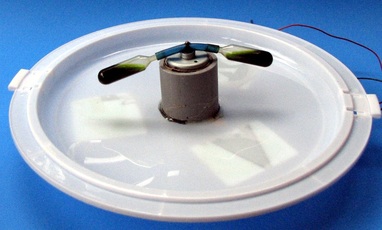
There are some experiments that require equipment that is either too costly, or may only be used infrequently, as in the case of a centrifuge. Occasionally, I need one, but try to get around the problem in another way. But, I decided that it was time to make one myself and end the "alternative solutions" trying to get around the use of a centrifuge. This is the result of some considered thought and limited resources. For this experiment I wanted to work with extracted chlorophyll and check the fluorescence with a small UV LED flashlight. As you will see in the video, it worked fairly well.
There are many designs on the web but none seemed to be what I wanted. This build is extremely easy and allows for several alternative materials. For example, if aquarium tubing is not available, any flexible tubing from the hardware store will work. It can be purchased by the foot at a really low price. The only important factor is that the tubing has to be sized to be flexible and capable of being a forced fit for the dropping pipette. The other piece of this simple centrifuge is the knurl on the shaft of the motor. The tubing has to have something to "grab onto" and it could be a knurl, a flat spot, or a tiny gear. Balancing can be "trial and error" or small weights that can be moved to compensate. I found that if the tubing assembly is fairly accurate in distance from the shaft, and the fluid in the tubes are close to the same weight, the balance is fine. There are a couple of thoughts before the video and the included links:
I have posted this project in good faith, but there are always safety issues with anything that is spinning at 4000 RPM's. The safe and careful operation of this device is the responsibility of the reader. I can assume no responsibility for your safety. I have recommended plastic pipettes and not glass as there is greater risk with glass. Always use a container of some type to enclose the centrifuge. Now, on with the video:
 RSS Feed
RSS Feed
